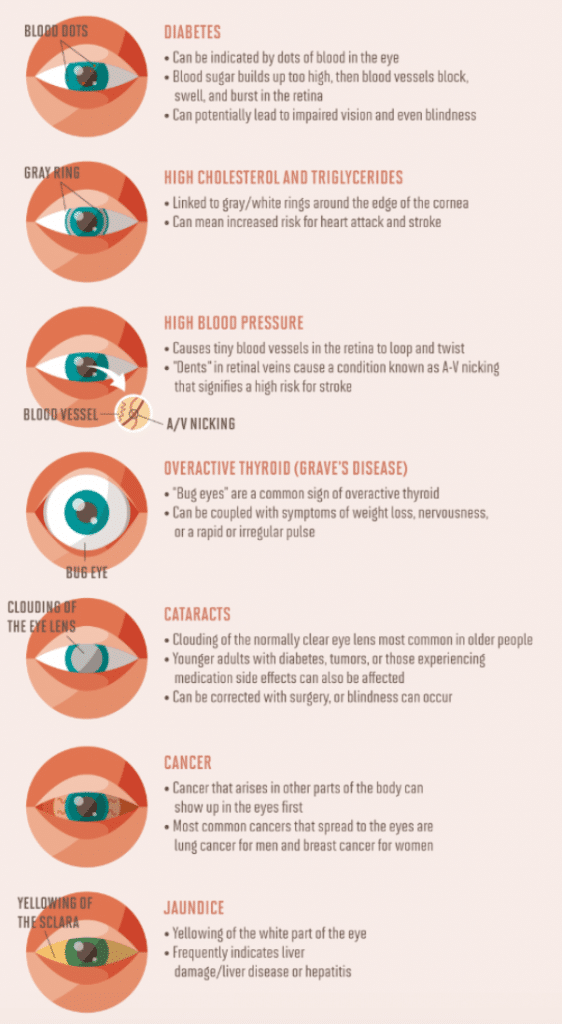Disappearing Lips Body Language
Welcome to the fascinating world of body language! Have you ever noticed someone’s lips seemingly disappear when they’re feeling uncomfortable or nervous? Well, my friend, that’s what we call “disappearing lips body language.” Let’s dive in and uncover the hidden meaning behind this intriguing nonverbal communication.
Imagine being in a conversation where the person’s lips suddenly become thin and tightly pressed together, as if they’re trying to vanish into thin air. This subtle yet powerful body language can speak volumes about their emotions and state of mind. Don’t worry, we’ll unravel the mysteries and decode the messages conveyed by disappearing lips.
In this article, we’ll explore the different reasons why lips might disappear during interactions, ranging from discomfort to deceit, and everything in between. So, get ready to sharpen your observation skills and unlock the secret language of disappearing lips! Let’s begin our journey into the captivating world of body language.

Unveiling the Mystery of Disappearing Lips Body Language
Body language can convey a multitude of messages, often without us even realizing it. One intriguing aspect of nonverbal communication is the phenomenon known as “disappearing lips.” This subtle yet significant body language cue can provide insight into a person’s emotions, intentions, and level of comfort. In this article, we will delve into the fascinating world of disappearing lips body language, exploring its various meanings and implications.
The Signals Behind Disappearing Lips
When observing someone whose lips seem to disappear or become less visible, it is essential to consider the context and accompanying nonverbal cues. Disappearing lips can indicate a range of emotions, from anxiety and uncertainty to discomfort or a lack of confidence. This body language gesture can manifest in different ways, such as pursed lips, a tightly closed mouth, or even the complete absence of lip movement.
One of the main factors influencing disappearing lips body language is the individual’s level of stress or tension. When faced with a stressful situation, the body’s fight-or-flight response can kick in, causing the lips to tighten or withdraw. Similarly, in moments of discomfort or unease, a person may instinctively “seal” their lips as a protective mechanism. However, it is crucial to note that everyone’s baseline body language may vary, so it’s essential to consider other nonverbal cues and the individual’s overall behavior while analyzing disappearing lips body language.
To gain a more comprehensive understanding of disappearing lips body language, let’s explore several key instances where this nonverbal cue may surface:
Anxiety and Nervousness
When confronted with a high-stress situation, such as public speaking or a job interview, many people experience feelings of anxiety and nervousness. Disappearing lips can be a telltale sign of these emotions. Someone who is anxious may subconsciously clench their jaw, press their lips tightly together, or even bite their lips. These behaviors serve as a self-soothing mechanism, providing a sense of control during moments of vulnerability.
If you find yourself in a similar situation, it’s important to try to relax and focus on your breathing. Taking deep breaths can help alleviate tension and reduce the likelihood of displaying disappearing lips body language. Additionally, practicing mindfulness techniques or seeking professional support can assist in managing anxiety and its physical manifestations.
Remember, understanding and empathy towards others who exhibit disappearing lips body language can go a long way in creating a supportive environment.
Discomfort and Disagreement
Disappearing lips can also surface during moments of discomfort or disagreement. When someone is exposed to a situation or conversation that challenges their beliefs or values, they may exhibit this body language cue. Tightening the lips or pressing them together serves as a way to prevent themselves from saying something they may later regret or as a means to signal their disapproval or disagreement without verbalizing it.
If you notice someone demonstrating disappearing lips during a discussion, it’s essential to approach the situation with empathy and open-mindedness. Recognize that they may be processing contrasting viewpoints or experiencing discomfort. Creating a safe space for communication and actively listening to their perspective can help ease tension and foster constructive dialogue.
It’s important to note that while disappearing lips may suggest disagreement or discomfort, it should not be taken as a definitive indicator. Analyzing other nonverbal cues, such as eye contact, facial expressions, and overall body posture, can provide a more accurate understanding of the individual’s state of mind.
Reservedness and Introversion
Introverted individuals may naturally display disappearing lips body language as part of their personality traits. This nonverbal cue can indicate a reservation or restraint when it comes to expressing emotions or opinions. Introverts may choose to keep their lips less visible as a way to protect their thoughts and inner world.
If you identify as an introvert and often find yourself exhibiting disappearing lips body language, it’s crucial to remember that your voice matters. While it’s perfectly valid to process information internally and choose your moments to speak, it’s also essential to find ways to express yourself confidently. Practice self-assertion techniques and explore environments where you feel comfortable sharing your thoughts and ideas. Building self-confidence can help you navigate social situations and communicate effectively while staying true to your introverted nature.
Understanding and embracing the diversity of body language cues can enhance our interactions with others and enable us to navigate social dynamics more effectively.
The Hidden Language of Nonverbal Communication
Nonverbal cues have the power to unveil a wealth of information about individuals and their emotional states. By learning to decipher body language, we can enhance our understanding of others and foster better connections. Disappearing lips body language is just one of the many signals that can provide valuable insights into a person’s emotions, intent, and level of comfort. By paying attention to this subtle nonverbal cue and considering its various contexts, we can become more attuned to the unspoken messages that shape our interactions.
Decoding the Nuances of Disappearing Lips Body Language
Disappearing lips body language is a complex nonverbal cue that can be influenced by numerous factors. Understanding the nuances of this gesture can deepen our comprehension of human behavior and pave the way for more effective communication. In this section, we will explore additional aspects of disappearing lips body language and how they can vary in different contexts.
Subtle Variations in Disappearing Lips
While disappearing lips can generally indicate discomfort or restraint, it’s important to recognize that not all instances of this body language cue hold the same meaning. Subtle variations in how people exhibit disappearing lips can provide valuable insights into their emotional state and level of self-assurance.
One variation to consider is the degree of lip pressure. Some individuals may place minimal pressure on their lips, causing them to barely touch or almost disappear. This can indicate a mild level of discomfort or uncertainty. On the other hand, individuals who press their lips firmly together or tightly clench them may be experiencing heightened stress, anxiety, or a desire to avoid further communication.
Observing the speed at which the lips disappear or reappear can also be telling. Rapidly disappearing lips, followed by their reappearance, can indicate fleeting discomfort or a momentary change in the individual’s emotional state. Conversely, lips that remain hidden for an extended period may suggest deeper-seated reservations or a more profound level of unease.
The Influence of Cultural Factors
It is crucial to acknowledge that body language cues, including disappearing lips, can be influenced by cultural differences. What may hold one meaning in one culture may convey something entirely different in another. Therefore, it is imperative to approach the interpretation of body language with cultural sensitivity and an awareness of potential variations.
In some cultures, displaying disappearing lips may be seen as a sign of respect or attentiveness. Keeping the lips concealed can prevent distracting movements while someone is speaking or listening. In contrast, certain cultures place a strong emphasis on open communication and may perceive disappearing lips as a lack of trust or engagement.
When interpreting body language, including disappearing lips, it is essential to consider the individual’s cultural background and the cultural norms that may shape their nonverbal communication patterns. Being mindful of these factors can prevent misinterpretations and foster greater cross-cultural understanding.
The Role of Gender and Disappearing Lips
It is worth noting that gender can also play a role in the manifestation of disappearing lips body language. Social and cultural expectations may influence how males and females express their emotions and communicate nonverbally.
While these expectations vary across cultures, some general patterns can emerge. In certain societies, women may be encouraged to display more facial expressions and engage in more open communication, leading to less frequent manifestation of disappearing lips. On the other hand, men may be socialized to exert more control over their emotions and display a stoic demeanor, which could contribute to a higher likelihood of exhibiting disappearing lips body language.
However, it is essential to avoid making blanket assumptions based on gender stereotypes. Each individual is unique, and personal experiences, upbringing, and cultural factors can influence their expression of nonverbal cues. To truly understand someone’s body language, it is crucial to consider each person as an individual and avoid generalizations based on gender alone.
Mastering the Art of Nonverbal Communication
Nonverbal communication is a powerful tool in our interpersonal interactions. By developing our skills in deciphering and interpreting body language, we can become more perceptive and effective communicators. Here are a few tips for mastering the art of nonverbal communication:
Pay Attention to the Context
Context is crucial when interpreting body language cues, including disappearing lips. Consider the situation, the individuals involved, and any other nonverbal cues that may accompany disappearing lips. By taking a holistic approach and considering the broader context, you can gain a more accurate understanding of the message being conveyed.
Observe Nonverbal Clusters
A single nonverbal cue, such as disappearing lips, may not provide enough information on its own. Look for clusters of nonverbal cues that align with each other. For example, if someone’s lips disappear, but their posture appears relaxed and open, it may suggest a different emotional state than if their lips disappear, and they exhibit closed-off body language.
Cultivate Active Listening
Effective communication involves both speaking and listening. By actively listening to the speaker, you can pick up on subtle cues, such as changes in tone, facial expressions, and disappearing lips. Creating a space for meaningful dialogue and demonstrating your attentiveness through nonverbal cues can promote open and honest communication.
Practice Empathy
Empathy is vital in understanding others and establishing meaningful connections. Put yourself in the other person’s shoes and try to understand their perspective. By approaching conversations with empathy and an open mind, you can create a supportive environment that encourages honest expression and minimizes misunderstandings.
Conclusion
Disappearing lips body language is a rich and nuanced part of nonverbal communication. This subtle cue can provide valuable insights into a person’s emotions, intentions, and level of comfort. By understanding the various contexts and meanings behind disappearing lips, we can further enhance our ability to decode nonverbal cues and foster better connections with those around us. Whether you are observing or displaying disappearing lips body language, remember to consider the broader context, practice empathy, and strive for open and honest communication. Together, these skills will enable you to navigate the hidden language of nonverbal interaction with finesse and understanding.
Key Takeaways: Understanding Disappearing Lips Body Language
- When someone presses their lips together and they appear to vanish, it can indicate anxiety or discomfort.
- A disappearing lips gesture may suggest that a person does not want to speak or share their thoughts.
- This body language can also be a sign of deception or withholding information.
- Observing other nonverbal cues, such as facial expressions and body posture, can help in interpreting disappearing lips body language.
- It’s important to consider the context and individual differences when analyzing this type of body language.
Frequently Asked Questions
Welcome to our FAQ section on the intriguing topic of disappearing lips body language. Below, we have provided answers to some of the most commonly asked questions about this non-verbal form of communication. Let’s dive in!
1. What is disappearing lips body language?
Disappearing lips body language refers to the behavior of a person involuntarily pressing their lips together or tightly pursing them, making their lips almost “disappear” visually. This gesture often indicates discomfort, nervousness, or the need to withhold information. It can be observed in various situations, such as during a challenging conversation, when someone feels threatened, or when they are trying to hide something.
The disappearance of the lips can serve as a signal of unease, suggesting that the person may be holding back their true feelings, opinions, or intentions. It’s important to consider the context and other accompanying body language cues to accurately interpret the meaning behind this behavior.
2. What are the possible reasons someone displays disappearing lips body language?
There are several reasons why someone might display disappearing lips body language. One common interpretation is that the person is feeling anxious or uncomfortable in a particular situation. It may serve as a defense mechanism to protect oneself or to avoid engaging in further conversation that they deem as potentially threatening or stressful.
Another reason for displaying disappearing lips body language could be a sign of withholding information. The person may be reluctant to reveal their true thoughts, feelings, or opinions for fear of negative consequences or judgment. This behavior can also indicate a lack of trust or difficulty in expressing oneself openly in certain social or professional contexts.
3. How can I interpret disappearing lips body language in a conversation?
Interpreting disappearing lips body language can be tricky, as it is just one piece of the overall puzzle that makes up non-verbal communication. It’s essential to consider other accompanying cues, such as facial expressions, body posture, and gestures, to get a more accurate understanding of the person’s emotions or intentions.
When encountering disappearing lips body language, pay attention to the context and the person’s overall demeanor. Are they displaying other signs of discomfort, like fidgeting or avoiding eye contact? Is the situation potentially challenging or tense? By considering these factors, you can form a more informed interpretation and adjust your communication accordingly.
4. How should I respond when I notice someone displaying disappearing lips body language?
If you notice someone displaying disappearing lips body language, it’s crucial to respond with empathy and understanding. Recognize that the person may be feeling uncomfortable or uneasy in the current situation. Ensure that you create a safe and non-judgmental environment for open communication.
Acknowledge the person’s body language and give them space if they seem to be withdrawing or guarding their thoughts. Offer reassurance, actively listen, and ask open-ended questions to encourage them to share their feelings or concerns. Remember that each individual is unique, so it’s important to be sensitive to their needs and respect their boundaries.
5. Can disappearing lips body language be improved or changed?
Yes, it is possible to improve or change disappearing lips body language with self-awareness and practice. Start by reflecting on the situations or triggers that prompt this behavior in yourself. Explore the underlying emotions or beliefs that contribute to your discomfort or unwillingness to express yourself openly.
Work on building your self-confidence and developing effective communication skills. This can involve seeking support from a professional, learning assertiveness techniques, and practicing open and honest conversations with trusted individuals. By addressing the root causes and building emotional resilience, you can gradually cultivate more positive and confident body language, including your lip expressions.
Allan Langer: “Pursed Lips in Body Language”
Summary
When someone’s lips disappear, it could mean they’re feeling stressed, anxious, or uncomfortable. This body language is often a sign of tension or unease. It’s important to pay attention to other cues, like facial expressions and body posture, to interpret the meaning accurately.
To understand if someone’s lips are disappearing due to discomfort, look for other signs of stress or anxiety. It’s crucial to consider their overall body language to fully grasp the message they’re conveying. Remember, nonverbal cues can reveal a lot about how people are feeling, so pay attention to their disappearing lips and other gestures.

